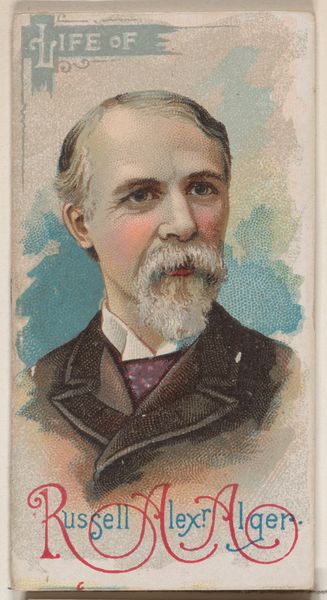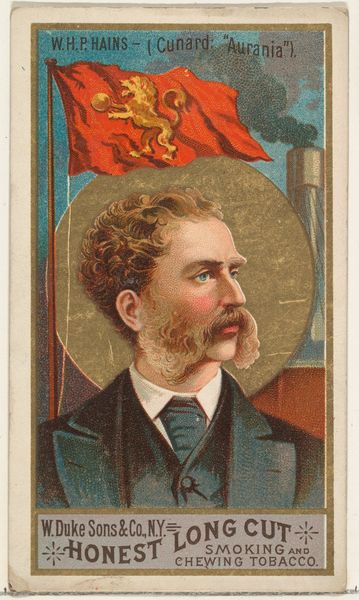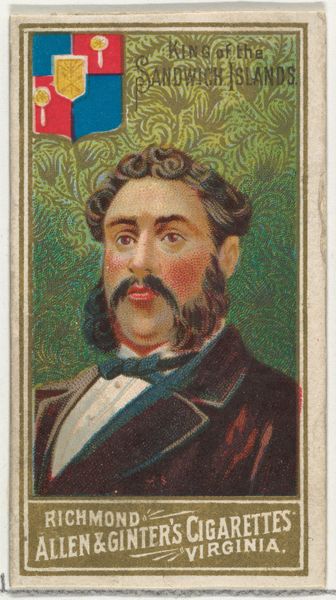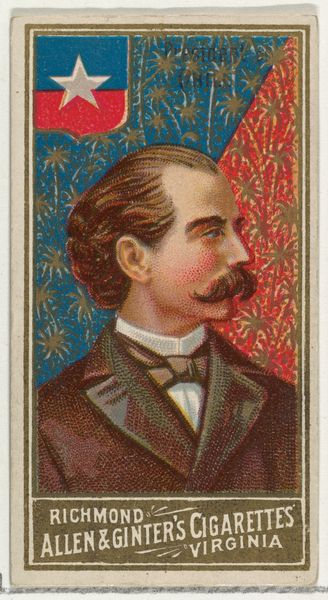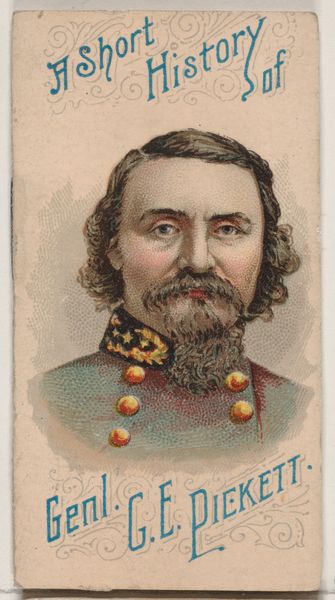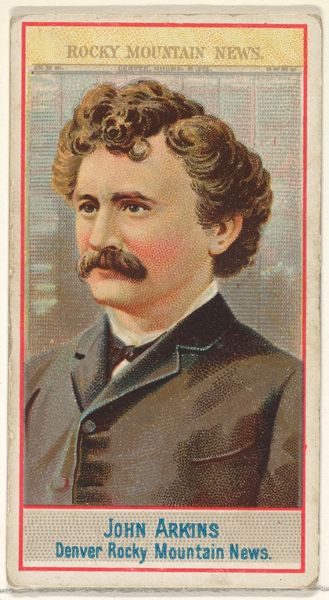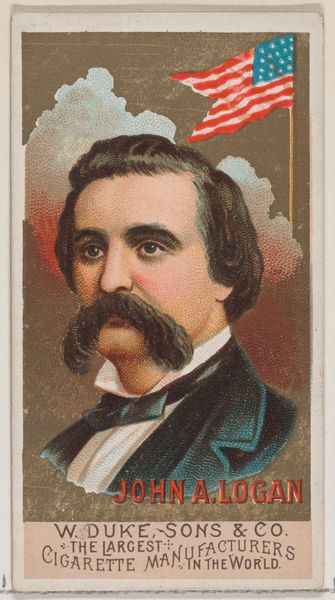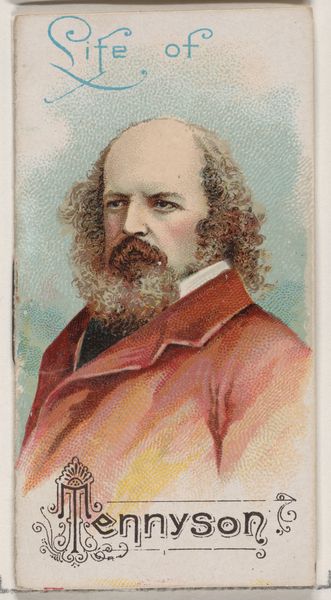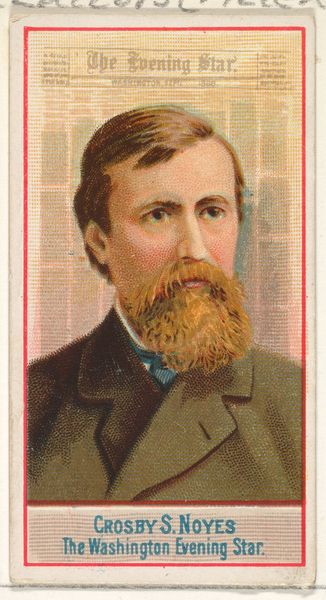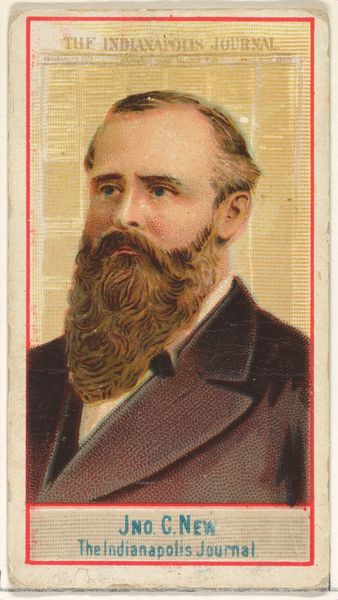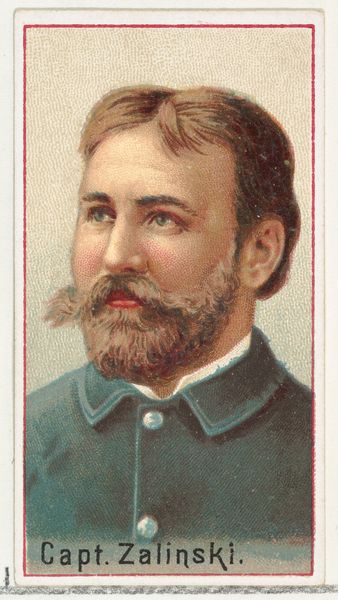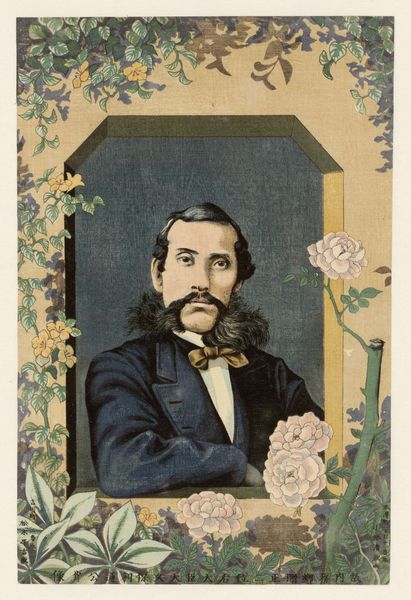
Life of Josh Billings, from the Histories of Poor Boys and Famous People series of booklets (N79) for Duke brand cigarettes 1888
0:00
0:00
drawing, coloured-pencil, print
#
portrait
#
drawing
#
coloured-pencil
# print
#
coloured pencil
#
men
Dimensions: Overall (Booklet closed): 2 3/4 × 1 1/2 in. (7 × 3.8 cm) Overall (Booklet open): 2 3/4 × 2 7/8 in. (7 × 7.3 cm)
Copyright: Public Domain
Editor: This little card, “Life of Josh Billings,” from 1888, by W. Duke, Sons & Co., seems to be a coloured pencil drawing, reproduced as a print. The portrait is so small and feels so…mass-produced. What stands out to you? Curator: Immediately, I notice the means of its distribution. It's not fine art, meant for a gallery. It's an advertisement, a premium item packaged with cigarettes. This places it within a whole system of production, consumption, and labor. The drawing itself, the use of coloured pencils, suggests a skilled, but not necessarily celebrated, artisan laboring to create images meant to drive sales. Editor: So, you see it as part of the wider system of cigarette marketing at the time. Is that like how those cards tried to connect smoking with things like… famous people and success? Curator: Precisely! These "Histories of Poor Boys and Famous People" aim to associate Duke cigarettes with aspiration and upward mobility. Consider the materials themselves: paper, ink, colored pencils. These aren’t inherently precious. Their value lies in how they are manipulated to create a commodity, fostering the illusion that buying cigarettes is a pathway to a better life, mirroring Billings’ own supposed rise. What message does this card attempt to sell, alongside cigarettes? Editor: That’s fascinating! I guess it’s trying to say that even a poor boy can achieve fame and… well, implicitly, that smoking Duke cigarettes can somehow help. So the value isn't intrinsic, but tied to its role in this system of consumerism. Curator: Exactly. The focus isn't on artistic genius, but on the processes of making, distribution, and the cultural narratives that drive consumer desire. Analyzing this print reveals much about the economics of desire, doesn’t it? Editor: Yes, it really challenges the way I thought about art and value. It’s not just about the image itself, but about its journey as a mass produced consumer product. Curator: Indeed, viewing art through a materialist lens illuminates the systems of power at play.
Comments
No comments
Be the first to comment and join the conversation on the ultimate creative platform.

